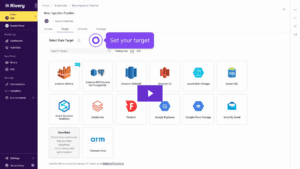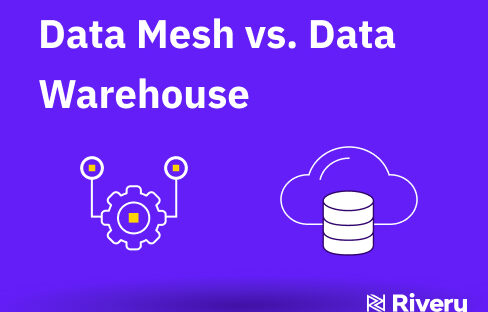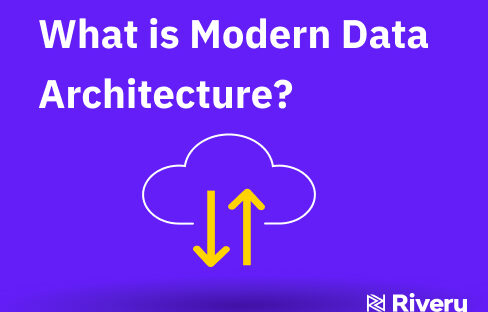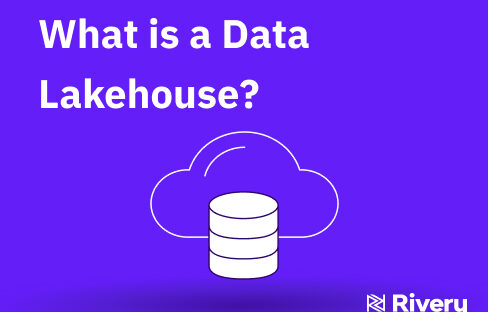Companies that work with large amounts of data must find a way to store it. Two effective and helpful data repositories are data lakes and data warehouses.
While many think these two refer to the same kind of repository, the truth is that they are different. Knowing the differences between a data warehouse and a data lake is critical to deciding whether your company needs one or the other.
Definition of Data Lakes and Data Warehouses
What’s the difference between a data lake and a data warehouse? Before we dive in, let’s define them.
What is a Data Lake?
A data lake is a centralized repository that stores various types of data, including structured, semi-structured, and unstructured.
Data can be stored in real-time and moved to the data lake in its original format. Flexible and easy-to-use, a data lake scales with you according to the amount of data you need to move and store. At the same time, it cuts the time required to define data structures, schema, and transformations.
What is a Data Warehouse?
Data warehouse (DW or DWH) is a central repository for historical and current data, derived from one or multiple sources, like relational databases. The data also passes through an operational data store and needs to be cleansed for better quality before it’s used for analytical reporting. In a data warehouse, the data’s purpose must be determined before it goes through the transformation. Although the system isn’t as flexible as a data lake, it does allow for better organization.
Differences in Data Storage and Structure
When comparing a data lake vs. a data warehouse, you will notice several differences. The most prominent one is regarding data storage and structure.
Explanation of Data Storage in Data Lakes
When it comes to data storage in data lakes, data can be stored in its original format. Whether it’s unstructured, semi-structured, or structured data, it will be sent to the storage system until the company decides to use it. Because of this, data lakes must offer a lot of storage to fit entire data sets.
Explanation of Data Storage in Data Warehouses
As for data storage in data warehouses, data must be transformed first. The transformation process, called ETL (extract, load, and transform), allows the company to save only the information it needs for its cause.
Comparison of Data Structure Between Data Lakes and Data Warehouses
If you look at data lake and data warehouse architecture, you will notice that one of the fundamental differences is in the data structure. To use a data warehouse, you must primarily focus on structured data. Contrary, it is better to use a data lake if you have unstructured and semistructured data in addition to structured data.
Differences in Data Types
In the data lake vs. data warehouse debate, it is essential to consider the type of data you would store.
Explanation of Data Types in Data Lakes
Companies use data lakes to store raw data. In fact, raw, unprocessed, transactional, or even more complex data will always require a data lake. As long as the data is raw, you can also store data from databases, applications, IoT devices, or social media here.
Explanation of Data Types in Data Warehouses
As opposed to the data types used with data lakes, you use processed data in data warehouses. That data could be anything from text to numerical information or information gathered through SQL queries.
Comparison of Data Types Between Data Lakes and Data Warehouses
As you can see, data warehouses only deal with processed data types, whereas data lakes deal with unprocessed, raw data. Of course, unprocessed data can always be processed, transformed, and moved from a data lake to a data warehouse, but that depends on the company’s needs.
Differences in Data Processing
Another key difference between data lake and data warehouse architecture is data processing. The key here is when the company needs to process the data.
Explanation of Data Processing in Data Lakes
Data lakes do not require data processing before storing the information. Instead, the company is free to store data as it is. The data will be available for the company to process whenever needed.
Explanation of Data Processing in Data Warehouses
Unlike data lakes, data processing must happen before the data is stored in a data warehouse. All the information is extracted from the source, loaded, and then transformed according to the company’s needs.
Comparison of Data Processing Between Data Lakes and Data Warehouses
When comparing data processing between data warehouses and lakes, you can notice that the schema of the repository systems is quite different. The schema of a database or system determines how the data is organized. Between data lakes and data warehouses, said schema is different.
Data lakes use a so-called schema-on-read, meaning the organization of the data changes every time we use it for something. It varies depending on what we use the data for.
In comparison, data warehouses use a schema-on-write, meaning the data is organized when initially stored. These databases are well-thought-out, allowing users to navigate the information effortlessly.
So, data processing and organization are quite different between these systems. This should be considered before storing data so that you know what works best for you.
Differences in Data Usage
Yet another difference between data warehouse and data lake systems is data usage. Depending on whether you know what you need to use the information for, you can choose one or the other repository system. Here is how to determine which one you need:
Explanation of Data Usage in Data Lakes
Considering that the data stored in a data lake comes raw and unprocessed, the company can determine the use it whenever needed. This data can be utilized for anything the company wants, but machine learning is one of the most common uses for data stored in data lakes.
Explanation of Data Usage in Data Warehouses
As for data stored in data warehouses, the use is determined beforehand so that the warehouse can store already transformed data. Simply put, the data is already in use when it is stored. More often than not, businesses would use data stored in warehouses to create reports or other kinds of files for company use.
Comparison of Data Usage Between Data Lakes and Data Warehouses
With data warehouses, you must determine the use of the data before the storage takes place. That is not so with data lakes, where the information is stored and can be used for anything at any point. Depending on whether you know what you need to use the data for, you can go with one or the other option.
Pros and Cons of Data Lakes and Data Warehouses
Now that we have discussed the basics of data warehouse and data lake repository systems, let’s focus solely on the advantages and disadvantages these systems come with.
Pros of Data Lakes
The most significant advantage of using data lakes is the system’s simplicity and affordability. It is effortless to set up and can store substantial amounts of information. Furthermore, it holds the data in full without taking anything out. That allows you to revisit and use the information for whatever you need.
Cons of Data Lakes
The disadvantages of data lakes include storing redundant information and lack of organization. Lately, some data lakes have taken on a new form and are more organized, but the model is still a long way from being as organized as data warehouses. Furthermore, data lakes are slower, so you must be patient while going through the data.
Pros of Data Warehouses
Everything that data lakes lack, data warehouses readily offer. These systems are fast and highly organized, holding much information but void of redundant data. They can store any kind of enterprise data that the company might need for data analytics.
Cons of Data Warehouses
The biggest setback of data warehouses is the hefty price, which might deter some companies or users. Furthermore, the system is less flexible regarding data storage as it tends to rely on specific organizational patterns.
| Data Lakes | Data Warehouses | ||
| Pros | Cons | Pros | Cons |
|
|
|
|
Choosing Between a Data Lake and Data Warehouse
If you are yet to determine whether you need a data lake or data warehouse, below are some pointers to help you make a more educated decision.
Factors to Consider When Choosing Between a Data Lake and a Data Warehouse
Several key factors could help you determine whether using a data lake or data warehouse for your business is best.
In general, you must consider the amount of data you need to store over time and the investment you are prepared to make. Data lakes offer better scalability and come at more affordable prices but lack organization. If organization and speed are what you are looking for, it is better to go with a data warehouse.
So, it all comes down to your needs and preferences.
Key Considerations When Implementing a Data Lake or Data Warehouse
Before cementing your choice, here are a few things to keep in mind when implementing a data lake or warehouse. Namely, the platform must:
- Be well-established, one that you can trust with your data.
- Come with security measures to further ensure the safety of the data.
- Quickly and easily store data from multiple sources.
- Be scalable, allowing you to add data continuously.
- Offer clear implementation guidelines that you can study to ensure the implementation goes smoothly.
Final Thoughts
Seeing that these terms are used more and more, it’s vital to know the data lake vs. data warehouse differences.
Remember that both data lakes and data warehouses are extremely helpful repository systems, so any company can benefit from integrating one and using it to store all the enterprise data. These systems can even be used in combination with one another.
If you want truly make your data flow, we at Rivery can help you aggregate, manage, and transform data—there is no shortage of options to look into. So, do not hesitate to call us today!
Book a demo, and let us streamline your data the right way!
Minimize the firefighting. Maximize ROI on pipelines.





